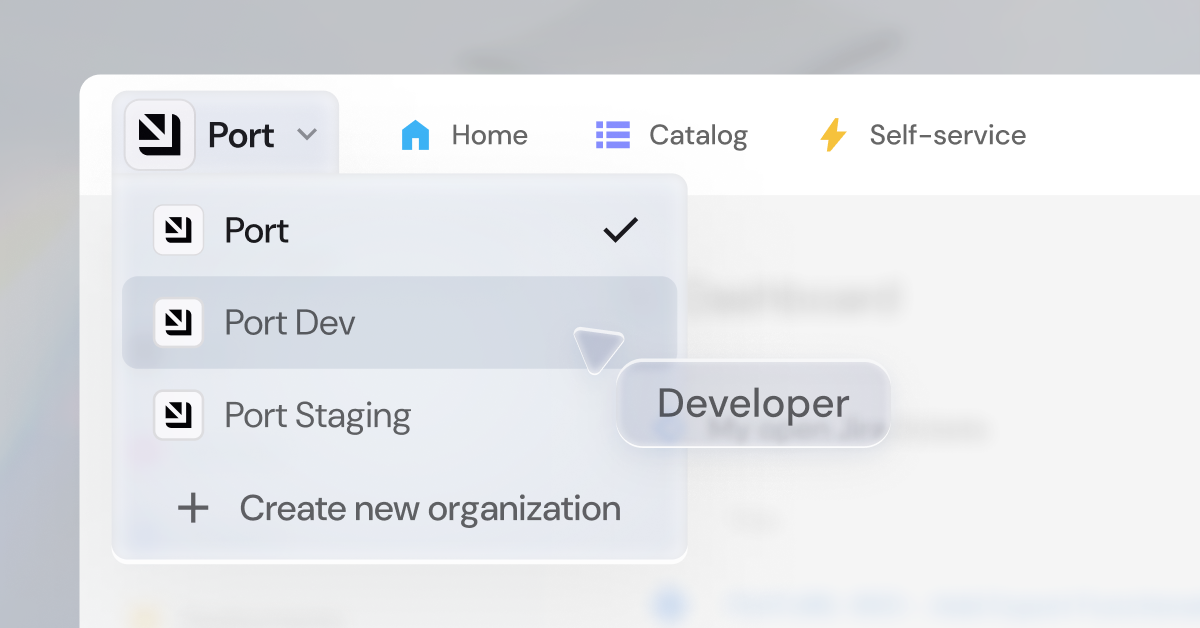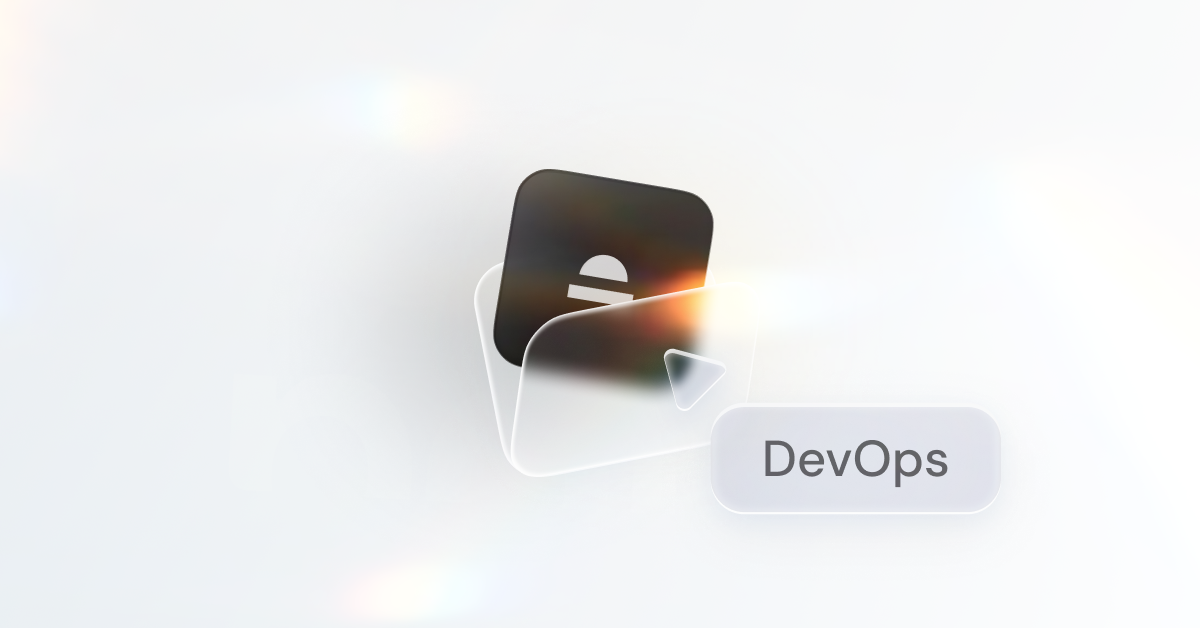
DevOps vs. platform engineering: Conceptual differences
DevOps emerged in the late 2000s as an approach to software development that broke down silos and improved collaboration between software developers and IT operations. This approach required a cultural shift in favor of process-driven change within engineering organizations.
Previously, developers and engineers evaluated their own work without proper knowledge of their deployment environments and the operational considerations their IT teams required. Before DevOps, releases were timed in months, if not years. This was deeply inefficient: if a developer passed over a task to the ops team, weeks or months could pass before the code was evaluated, let alone deployed to fix the problem. If developers needed to review or make changes a second time, they most likely had already moved on to other tasks and forgotten details of the project.
Implementing DevOps practices improved transparency between teams and encouraged a culture of collaboration. By sharing responsibility and embracing continuous improvement, engineering teams were able to work together to build better software, improve processes, and meet business goals quickly.
DevOps engineers help continue this transformation of software development best practices in their organizations today. Their work promotes developer agility by building the infrastructure, processes, and culture needed for faster deployments and improving site reliability.
Platform engineering, on the other hand, centers on improving the experience of everyone involved in software engineering, from developers to CTOs. They build and maintain the platforms and portals that provide self-service workflows to reduce developer friction, eliminate repetitive tasks, and improve scalability. Ultimately, platform engineers are the maintainers of the infrastructure DevOps builds, allowing developers to focus on building and shipping software faster.
Platform engineering as a concept emerged in the last few years as a response to the growing complexity of software development. According to Gartner, this is compounded by the “agile empowerment of teams” — as developers were more empowered by DevOps practices to move fast and make their own decisions about code and tools, standards began to slip. With the introduction of microservices, Kubernetes, cloud resources, and more, things only got messier.
The platform team builds an internal developer portal to support the organization’s software platform, and uses a product management approach to improve, scale, and maintain it, often referred to as “platform as a product.” In other words, platform engineers treat their users — including developers, DevOps, SREs, and engineering leaders — as customers of the platform, who will be best served by an experience that provides a consistent, reusable set of services and workflows for everyone on demand.
Platform engineering is about abstracting away the complexity of software development and ensuring users can follow golden paths to build and ship software efficiently. According to Gartner, by 2026, 80% of large software engineering organizations will have a dedicated platform engineering team — up from 45% in 2022.
How DevOps and platform engineering work together
DevOps and platform engineering are not competitors, they are complementary movements. Platform engineering focuses on cultural transformation, incorporating new working agreements, engineering values, and best practices, while DevOps ensures that the tools to support that culture are available and optimized. DevOps provides the method to develop and deliver software, whereas platform engineering is about building the platforms to facilitate efficient development. DevOps solves immediate operational bottlenecks, whereas platform engineering takes a proactive approach by building reusable solutions to prevent future bottlenecks.
While many organizations may believe they ought to “shift” from DevOps to platform engineering to solve the challenges they’re facing, this does not mean they should move away from DevOps practices or a DevOps team. In fact, as platform engineering also provides infrastructure to support DevOps workflows, combining their powers is the best way to get the most out of a DevOps team, delivering improved reliability, efficiency, and speed.

But just as when DevOps first emerged, many DevOps engineers are now calling themselves platform engineers, and DevOps teams are being renamed “platform engineering” teams. Organizations need to be wary that the roles and aims of each type of team are different. If an engineering team is big enough to incorporate both DevOps and platform engineering teams, then this will likely yield the best outcomes.
However, like many shifts in technology, sometimes teams need a new direction, and platform engineering can help them to focus on this new direction.
Examples of DevOps and platform engineering in practice
Example 1: Transitioning from DevOps to platform engineering at AMCS Group
AMCS Group initially built a global DevOps team to support its growing business, adopting tools and methods like Git, CI/CD, and Azure. However, as the company scaled from 200 to 1,000 employees, the DevOps team became overwhelmed with repetitive requests, such as cloud deployment and infrastructure change requests. This left little room for their DevOps team to innovate and make process improvements.
To address this, AMCS transitioned to a platform engineering approach, focusing on self-service capabilities for developers while maintaining best practices and security standards. The company established a dedicated platform engineering team, who provided developers with the tools and automation needed to build, test, and deploy applications independently.
A key initiative was the development of an internal developer portal, which introduced self-service actions to eliminate repetitive DevOps tickets and centralized service visibility through a software catalog, which helped to reduce requests for information.
Read the full case study here.
{{cta-demo-baner}}
Example 2: Using platform engineering to aid DevOps at Cybersixgill
Cybersixgill turned to platform engineering to alleviate DevOps bottlenecks caused by frequent developer requests for tasks such as scaffolding services and provisioning environments. The company introduced an internal developer portal to provide structured self-service actions, allowing developers to create new CD applications and update production environments without direct DevOps intervention.
To further streamline operations, Cybersixgill implemented an automated microservice scaffolding process, reducing service setup time from days to minutes. The platform also improved resource management, cutting down CI/CD cycle times from 30 minutes to 30 seconds — allowing developers to deploy changes faster while reducing DevOps dependencies.
Read the full case study here.
Example 3: Rabobank used platform engineering to maintain innovation velocity
Rabobank, a global financial services leader, faced a common enterprise challenge: a growing demand for digital products but a shortage of skilled engineers. While the obvious answer was to hire more engineers, any new hires still needed to be onboarded before they could deliver software, which increased their lead time for improvements. This wouldn’t be sustainable in the long term.
The company turned to platform engineering, ensuring teams could onboard and deliver value more efficiently.
Rabobank focused on documenting standards, golden paths, reusable infrastructure components, and automated onboarding and deployment. These measures streamlined workflows, empowered teams with self-service capabilities, and significantly reduced onboarding time. As a result, new teams could become productive within weeks rather than months.
The impact was clear: developer productivity accelerated, engineers experienced greater job satisfaction, and innovation velocity remained high despite talent shortages. By investing in platform engineering, Rabobank successfully reduced time-to-productivity for new teams, maximizing efficiency and maintaining a competitive edge.
Read more about it here.
{{cta_7}}
Common misconceptions and FAQs
- Is platform engineering replacing DevOps?
- No, platform engineering enables organizations to achieve their DevOps goals by iterating on developer experience and automating infrastructure to drive efficiency and autonomy.
- No, platform engineering enables organizations to achieve their DevOps goals by iterating on developer experience and automating infrastructure to drive efficiency and autonomy.
- Do you need DevOps if you have platform engineering?
- Yes, DevOps still ensures smooth collaboration and automation, while platform engineering streamlines infrastructure.
- Yes, DevOps still ensures smooth collaboration and automation, while platform engineering streamlines infrastructure.
- What is the biggest difference between DevOps and platform engineering?
- DevOps focuses on cultural transformation and collaboration, while platform engineering builds internal platforms to improve developer experience.
- DevOps focuses on cultural transformation and collaboration, while platform engineering builds internal platforms to improve developer experience.
- How does Site Reliability Engineering (SRE) fit in?
- SREs aim to ensure reliability and scalability of infrastructure
- They work with DevOps engineers to ensure automation and CI/CD pipelines are optimized.
- They decide on monitoring and alerting tools required for incident management.
- While DevOps and platform engineers assist SREs in incident response, it is SRE’s responsibility to lead incident response, and speed up future responses. DevOps and platform engineering principles can help SREs to meet their targets.
- What are the common pitfalls of platform engineering?
- Over-engineering the platform, creating unnecessary complexity.
- Lack of developer engagement, leading to low adoption.
- Not defining a clear product roadmap for the platform.
- How long do developers wait for DevOps or SRE assistance?
- 56% of developers wait 1-2 days for help, while 22% wait up to a week (State of Internal Developer Portals 2025).
The future of DevOps and platform engineering
- Is DevOps dead?
- No, but it will evolve to integrate more platform engineering elements.
- No, but it will evolve to integrate more platform engineering elements.
- Will platform engineering become mandatory?
- Yes. It is likely that large-scale organizations especially may opt to have an engineering team that incorporates developers, DevOps and platform engineers. Smaller organizations may decide to transition their existing DevOps team to become more aligned with platform engineering.
- Yes. It is likely that large-scale organizations especially may opt to have an engineering team that incorporates developers, DevOps and platform engineers. Smaller organizations may decide to transition their existing DevOps team to become more aligned with platform engineering.
- DevOps and platform engineering predictions for 2025 and beyond:
- AI-driven automation will reduce the need for manual interventions.
- Internal developer portals will become more prominent, helping to bring together SREs, DevOps engineers and platform engineers, along with developers into one workspace.
{{cta_2}}
Get your survey template today
Download your survey template today
Free Roadmap planner for Platform Engineering teams
Set Clear Goals for Your Portal
Define Features and Milestones
Stay Aligned and Keep Moving Forward
Create your Roadmap
Free RFP template for Internal Developer Portal
Creating an RFP for an internal developer portal doesn’t have to be complex. Our template gives you a streamlined path to start strong and ensure you’re covering all the key details.
Get the RFP template
Leverage AI to generate optimized JQ commands
test them in real-time, and refine your approach instantly. This powerful tool lets you experiment, troubleshoot, and fine-tune your queries—taking your development workflow to the next level.
Explore now
Check out Port's pre-populated demo and see what it's all about.
No email required
.png)
Check out the 2025 State of Internal Developer Portals report
No email required
Minimize engineering chaos. Port serves as one central platform for all your needs.
Act on every part of your SDLC in Port.
Your team needs the right info at the right time. With Port's software catalog, they'll have it.
Learn more about Port's agentic engineering platform
Read the launch blog
Contact sales for a technical walkthrough of Port
Every team is different. Port lets you design a developer experience that truly fits your org.
As your org grows, so does complexity. Port scales your catalog, orchestration, and workflows seamlessly.

Book a demo right now to check out Port's developer portal yourself

Apply to join the Beta for Port's new Backstage plugin
Further reading:

Learn more about Port’s Backstage plugin


















